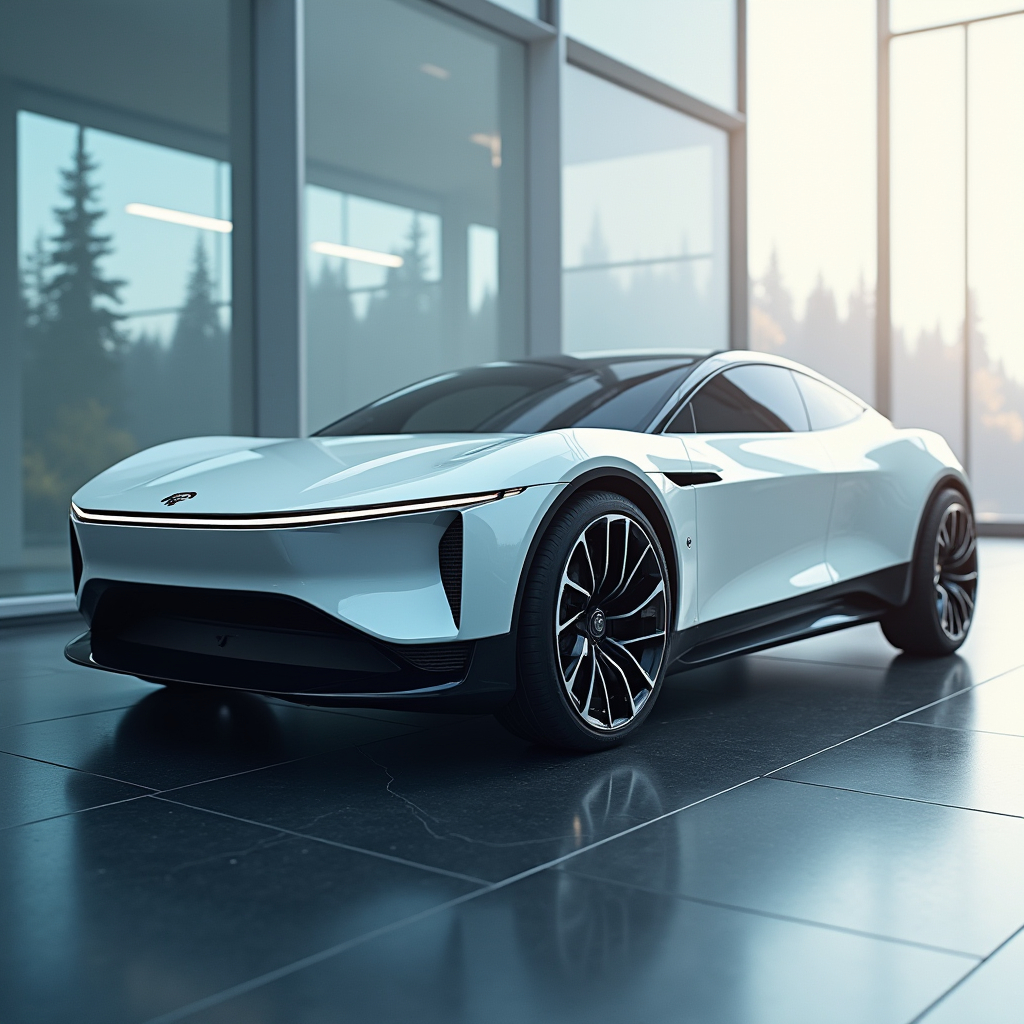Electric Cars and the Technological Progress Shaping Their Future
In recent years, the automotive industry has witnessed a paradigm shift with the rise of electric vehicles (EVs). Driven by environmental concerns, energy sustainability, and the rapid advancement of technology, electric cars have moved from a niche market to the mainstream. The transformation of transportation powered by internal combustion engines (ICE) to electric powertrains represents a leap forward in both technology and sustainability. This article explores the evolution of electric cars, their technological advancements, and how these innovations are shaping the future of mobility.
1. Historical Background of Electric Cars
While electric vehicles may seem like a modern innovation, their history dates back to the 19th century. The first practical electric car was developed in the 1830s by Scottish inventor Robert Anderson. These early electric vehicles (EVs) used non-rechargeable batteries, limiting their practicality. In the late 1800s and early 1900s, however, electric cars experienced a brief period of popularity, particularly among wealthy individuals in urban areas, due to their smooth operation and lack of emissions compared to noisy, smelly gasoline cars.
The rise of affordable gasoline-powered vehicles, particularly the mass-produced Ford Model T in the early 20th century, pushed electric cars into obscurity. Over the next several decades, the internal combustion engine dominated the market, while electric vehicles were largely relegated to niche applications. However, growing concerns over fossil fuel consumption, environmental impact, and advancements in battery technology have brought electric vehicles back into the spotlight, with the 21st century being marked by their rapid resurgence.
2. Technological Progress in Electric Cars
The growth and adoption of electric vehicles in the modern era have been powered by a series of key technological advancements. These innovations span various aspects of the EV ecosystem, from battery technology and charging infrastructure to software integration and autonomous driving.
a. Battery Technology
At the heart of every electric car lies its battery. Early electric cars used lead-acid batteries, which were heavy and inefficient. Modern electric vehicles, however, rely on lithium-ion batteries, which offer significant improvements in energy density, weight, and efficiency. Lithium-ion batteries have become the industry standard for EVs because they can store more energy in a smaller space, allowing vehicles to achieve greater range on a single charge.
Recent breakthroughs in battery chemistry and design are further extending the range and performance of EVs. Solid-state batteries, which replace the liquid or gel electrolyte found in conventional lithium-ion batteries with a solid material, are considered the next frontier. These batteries offer the potential for even greater energy density, faster charging, and improved safety by reducing the risk of overheating and fires. Companies like Toyota and QuantumScape are heavily investing in solid-state battery research, with commercial applications expected in the next few years.
b. Charging Infrastructure
One of the biggest challenges in the adoption of electric cars has been the development of widespread and reliable charging infrastructure. Initially, the limited availability of charging stations deterred consumers from making the switch to EVs, as the “range anxiety” — fear of running out of battery power with no place to recharge — was a significant concern.
However, rapid advancements in charging infrastructure have alleviated this problem. Public and private sectors have invested heavily in building a network of charging stations, both in urban centers and along major highways. Companies like Tesla, ChargePoint, and Electrify America have deployed thousands of fast-charging stations globally, enabling long-distance travel with EVs.
Moreover, advancements in charging technology have significantly reduced charging times. Level 3 DC fast chargers can now add hundreds of miles of range in under an hour. The development of ultra-fast charging technologies, such as 800-volt systems, is poised to cut charging times even further, with some future systems promising an 80% charge in as little as 15 minutes.
c. Electric Powertrains
Electric vehicles operate using electric motors rather than traditional internal combustion engines. This shift eliminates many mechanical components, such as transmissions, fuel systems, and exhaust systems, resulting in simpler designs and fewer parts that can fail over time. Electric motors also provide instant torque, giving EVs superior acceleration compared to their gasoline counterparts.
Recent innovations in electric powertrain design have focused on improving efficiency and performance. Dual-motor and all-wheel-drive configurations have become more common, providing better handling and traction. Some EV manufacturers, like Tesla and Rivian, have even developed four-motor systems, where each wheel is powered independently, offering unprecedented control and off-road capabilities.
d. Energy Regeneration and Efficiency
One of the key advantages of electric vehicles is the ability to regenerate energy through braking. Known as regenerative braking, this technology allows the electric motor to reverse its function when the car slows down, converting kinetic energy back into electrical energy and storing it in the battery. This improves overall efficiency and helps extend the range of the vehicle.
Automakers continue to refine regenerative braking systems to maximize energy recovery. Some advanced systems allow drivers to adjust the level of regenerative braking, giving them more control over how the car decelerates and recoups energy. Innovations like one-pedal driving, where releasing the accelerator pedal activates regenerative braking to a greater degree, further enhance the driving experience and energy efficiency.
e. Autonomous Driving and Connectivity
Beyond electrification, electric vehicles are often at the forefront of the push toward autonomous driving and vehicle connectivity. EV manufacturers, particularly Tesla, are leading the charge in developing self-driving technologies that rely on sophisticated sensors, cameras, and artificial intelligence (AI) algorithms to navigate and control the vehicle without human intervention.
Autonomous driving technologies promise to revolutionize transportation by improving safety, reducing traffic congestion, and providing greater convenience for passengers. The integration of advanced driver-assistance systems (ADAS), such as lane-keeping assistance, adaptive cruise control, and automated parking, is already becoming commonplace in electric vehicles.
Connectivity features in electric vehicles also provide benefits beyond autonomy. Many EVs come equipped with over-the-air (OTA) update capabilities, allowing manufacturers to remotely update the car’s software, fix bugs, and add new features. This ensures that electric cars can improve over time without requiring visits to a service center, further enhancing the ownership experience.
3. Environmental Impact and Sustainability
One of the most significant drivers behind the rise of electric vehicles is the push for sustainability and reducing carbon emissions. Internal combustion engine vehicles are major contributors to air pollution and greenhouse gas emissions. EVs, by contrast, produce zero tailpipe emissions, offering a cleaner alternative for transportation.
While the production of electric vehicles, particularly their batteries, does result in some environmental impact, studies have shown that the total lifecycle emissions of EVs are significantly lower than those of gasoline-powered cars. As the energy grid becomes greener, with more electricity being generated from renewable sources like wind and solar, the environmental benefits of EVs will only increase.
The development of battery recycling technologies is also helping to mitigate the environmental concerns associated with EV battery production. Companies are exploring ways to recycle and repurpose the valuable materials found in used batteries, such as lithium, cobalt, and nickel, reducing the need for mining new raw materials and lessening the environmental footprint of battery production.
4. Challenges and Future Outlook
Despite the tremendous progress electric vehicles have made, challenges remain. High upfront costs, limited range (compared to gasoline cars), and charging infrastructure gaps in rural areas still present barriers to widespread adoption. However, as battery technology continues to advance, costs are expected to decrease, and range will improve.
Government policies and incentives are also playing a crucial role in driving EV adoption. Countries around the world have introduced subsidies, tax credits, and stricter emissions regulations to encourage consumers to switch to electric vehicles. Some governments have even announced plans to phase out the sale of new gasoline-powered vehicles within the next decade.
In conclusion, the electric vehicle revolution is well underway, fueled by continuous technological progress. From advancements in battery technology and charging infrastructure to autonomous driving and sustainability efforts, the future of electric cars looks bright. As the world shifts toward cleaner, more efficient modes of transportation, electric vehicles are poised to play a central role in reducing our environmental impact and transforming the way we move.






